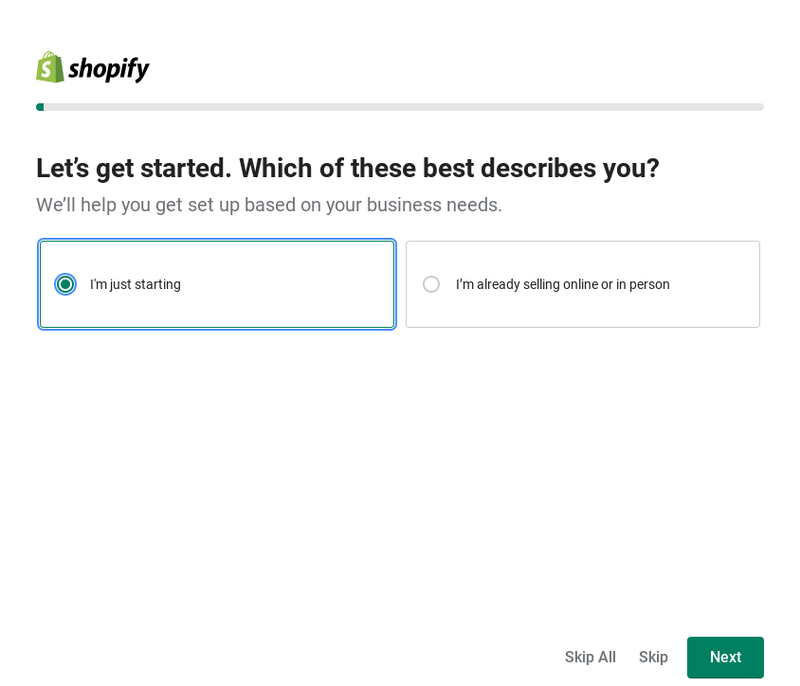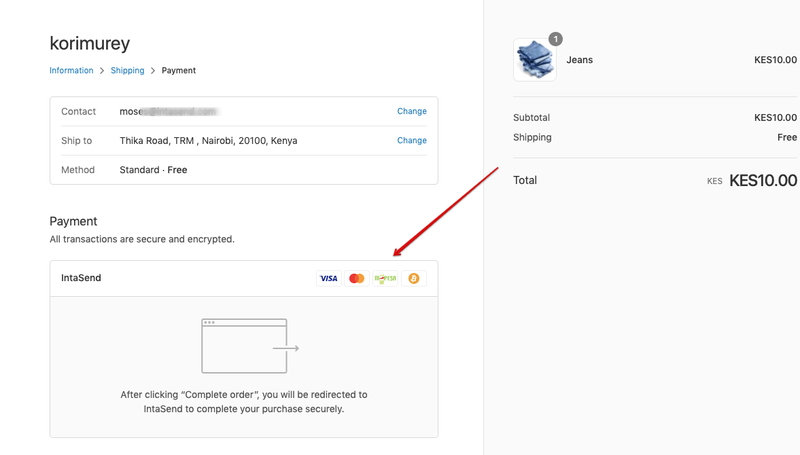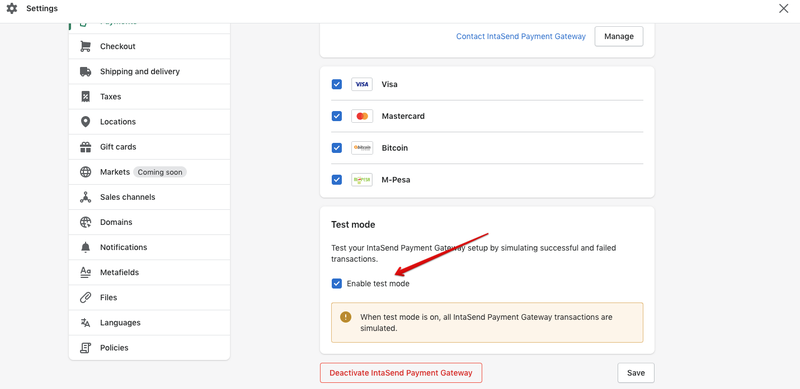
Is Shopify available in Kenya? How do I sell on Shopify from Kenya? Can you use M-Pesa on Shopify? If you are thinking of starting a Shopify store in Kenya and are asking the same questions, this guide is for you.
Not everyone has a remote work skill they can sell online. We can’t all be freelance writers and virtual assistants.
That does not mean you can’t make money online. Besides remote work skills, you can also sell physical and digital products online and earn a good income.
But selling physical products online requires a digital infrastructure that is akin to setting up a brick-and-mortar skill. You need an online shop to sell your goods over the internet. You also need a way to accept payments - like a POS portal in a supermarket that accepts card and M-Pesa payments.
If you are not tech-savvy or don’t have much start-up capital, putting all this together can be a challenge. Setting up an online store will not cost you as much as an offline store, but the process is more technically involved.
That is the problem that Shopify solves. The good news for entrepreneurs in Kenya is that Shopify is available in the country.
Through the steps you will learn in this article, you will be able to easily set up a Shopify store in Kenya and start selling right away.
Can I Open a Shopify Store in Kenya?
Shopify is available and fully accessible in Kenya. All you need is to sign up for a subscription, which allows you to set up and host your e-commerce website, add products, integrate with a payment processor and start selling.
This means that anyone in Kenya can open a Shopify store. The online store will remain open and accessible to customers as long as you pay your monthly subscription.

Many other Kenyan merchants are already selling on Shopify. According to Store Leads, there are 649 live Shopify stores in Kenya as of May 16, 2023. With your store and others that will be set up soon, that number will continue to grow.
How Does Shopify Work in Kenya?
Shopify is a subscription-based e-commerce platform that allows merchants in Kenya and other markets to build and manage online stores. The platform unifies onto a single platform the entire process and infrastructure you need to set up an online store.
An e-commerce platform that takes care of all the technical details of setting up a website, Shopify is the platform for you if messing with computer code makes your head spin.
Built into your Shopify subscription are tools that are essential to retail business management tasks like:
- Product sourcing
- Inventory and sales tracking
- payment processing,
- shipping,
- customer account management,
- marketing and
- reporting
All your operational tasks and product and customer data are centralized on one platform. Even your social media marketing channels can seamlessly connect to your store, allowing you to, for example, add a buy button on your Facebook page.
Through its platform, Shopify gives merchants an online shop where they can display and accept payments for their products. Shopify recreates the physical store online, using tools that enable customers to view products and review their features to decide if they meet their needs and taste.
Importantly, Shopify allows merchants to deploy payment methods that are most accessible to their target market. For example, a Kenyan Shopify clothing store can integrate with M-Pesa so that its customers can pay using their M-Pesa mobile money wallets.
Even better, by integrating the Shopify store with a payment gateway like IntaSend, the Kenyan online clothing retailer can give its customers in Kenya and abroad more than one way to pay. As well as M-Pesa, the online store will be able to accept Visa, Mastercard, and Bitcoin payments.
Can You Make Money With Shopify?
Shopify only gives you the tools to sell online, which includes directly from your e-commerce website and from your social media pages. In other words, the platform sets you up for success. Everything else is up to you.
Whether you can make money through your Shopify store depends on whether there’s demand for what you sell there and how well you market your products to your target customers.

Shopify ensures that your online store’s doors are always open, day and night. You have every chance to succeed with your Shopify store as long as:
- your shop is always fully stocked with a nice variety of products,
- your products are fairly priced,
- you are driving enough people to your product pages,
- you have made it easy for people to pay for their purchases.
In other words, although other merchants are raking up millions of shillings in sales through their Shopify store, yours will fail if no one is interested in what you are selling.
The fundamentals of establishing any other business apply to Shopify stores. You have to do your homework. As well as establishing if there’s a problem that your product addresses whose solution people are desperate enough to pay for, you need to know if they are comfortable buying it online.
In terms of the profit potential of your Shopify store, that’s also down to you. While Shopify simplifies the process and reduces the cost of setting up and operating an online store and reduces costs, you are entirely in charge of all other expenses.
As with any other business, how well you contain your costs determines how much profit you will make. The products you are selling must not be too expensive to produce or source.
Otherwise, you will be forced to sell at high prices, which leads to low sales. Or you will sell at prices that don’t leave much profit for you after you deduct your expenses. As well as the cost of sourcing or making your products, you must account for marketing, licensing, administration, and other costs of operating your business.
Why Should You Use Shopify?
There are other e-commerce CMSs that you can use besides Shopify. A few alternatives are BigCommerce, Volusion, and WooCommerce. But these options are no match for Shopify’s functionality and ease of use.
Shopify opens more areas to sell besides your online store. You can also add a Shopify buy button to your social media pages and online marketplace product pages. Besides these multiple sales channels, Shopify also makes it a cinch to process your orders and track your shipments.
Even though Shopify is not free to use like WooCommerce, for example, its monthly subscriptions are competitive and friendly to beginner online store owners. As a beginner, you will also love that Shopify handles all the technical details of setting up and maintaining an online store for you.
A few cons of using the platform are the limited theme library, with the available themes having a basic look and lacking advanced customization features. The platform lacks the more robust SEO features that you get with WordPress, for example.
How to Set Up An Online Store With Shopify
We have previously covered the steps of starting an online business in Kenya. So for this article, we will assume that you have already done that. We are now taking that business online. Here’s what the process looks like with Shopify:
Step #1. Sign up for your free trial
Shopify offers a 14-day free trial. This is a no-obligation trial because Shopify will not even ask for your credit card details when you sign up for the free trial. You really can walk away if you decide after the trial that the platform is not what you are looking for.
To start, go to Shopify’s official website. This is the first step you will be asked to take:

Check the box that best describes you. Then click next.

You can set up Shopify on an existing website. The platform also has tools that enable you to sell on social media on marketplaces, and at your brick-and-mortar store. Check off all the places you want to sell from.
If you check the social media button, you will be asked what social media platforms you will be selling from. We are assuming you also want a fully customizable e-commerce website, so you will check that off too.

You can sell physical as well as services and digital products like music and ebooks on Shopify. Most merchants outside the USA and Europe where dropshipping isn’t as feasible choose to make or source their products themselves. But choose an option that appeals to you.
After that, you will be asked to choose your country from the dropdown menu. While you can set up your account from outside Kenya that will lock you out of many country-specific benefits that Shopify offers.

Creating your Shopify ID completes the account setup.
Step #2. Add your products
Time to fill the shelves!
OK, we mean digital shelves here. But this step is critical because you will be uploading pictures of your products.

Customers can’t physically experience your products in person. The pictures you add to your Shopify store are your only way to convince them to buy. Importantly, it's the only way customers can ‘try’ the product and determine if it’s the right fit and look for them.
To sell with product imagery, make sure your product pictures clearly show every detail of the product. Make sure the pictures are large and high resolution. While information product dimensions help, give customers another way to visualize the actual size of the product.
For example, if you are selling handbags, showing pictures of a human model holding the handbag in different poses helps customers imagine how the product would feel and look on them. The same applies to clothes.
You will also have to add pricing and size information. Every product listing also has a field for adding the product description. As well as using the product description to convince buyers, you can also optimize it around the words people use when searching for that product in Google, which improves the chances of your product pages showing up in Google results.
Step #3. Set up your payments
Merchants in Kenya have to integrate a third-party payment gateway that will process payments by customers on their Shopify stores. Shopify Payments, the platform's default payment gateway does not work in Kenya.
IntaSend is one of the payment gateways Shopify has partnered with in Kenya. Below we will show you the step-by-step process for integrating IntaSend on your Shopify website and start taking payments from customers using Visa, Mastercard, M-Pesa, and Bitcoin.
1. Install the IntaSend Payments app to your store
To accept payments using the IntaSend payment gateway, you will need to install the IntaSend Payments apps to your Shopify store. Shopify has a large library of plugins for adding functions to your Shopify store.
Go to the Shopify app store and search for IntaSend Payments. This link takes you directly to the IntaSend Payments app.
Once there, click the Add App button to get started.

2. Authorize and setup Keys

Click Install the app to proceed with the setup.
3. Install the app to your Shopify store
You will be redirected to the IntaSend setup page. Click the complete setup button for setup instructions.
We use these settings to link Shopify to your IntaSend account. If you don't have an IntaSend account, use this link to register.

To complete the setup, you'll need:
- your phone number/account used to register at IntaSend (this is the same phone number you use during IntaSend login),
- the public or publishable key,
- an API token (secret key).

All the above keys can be found under your account business - settings - API Keys section.

Copy the publishable key and paste it into the Public key field. Then generate the API token and copy the content to the API key section.
Note that the API key will be revealed only once. It will not be made available again. In case you have challenges with the old one, simply click the Generate API Token button for a new one, which will automatically replace the old keys.
Click submit. You'll be redirected back to Shopify to complete the setup.
3. Activate the payment app
Click the activate button as in the screenshot below to start using IntaSend to accept online payments.

When activated, IntaSend Payments will be made available at checkout pages.

Congratulations - You are now set to accept online payments securely with IntaSend.
Testing
You might want to test payments without signing up for real accounts, or in case your store is in the development stage. IntaSend supports test mode.
Here’s how to test if the IntaSend payments integration has been successful:

- Put your IntaSend app in test mode.
- Generate test keys from https://sandbox.intasend.com (no signup is required).
- Follow the authorisation and setup keys step above and instead of the live account keys, use the ones from the sandbox environment.
- Use the test cards from the API Testing and Sandbox for demo payment.
- Note: Test mode can only work when the setup keys are from the Sandbox environment. To go back to the live, you must obtain the keys from the live environment - https://payment.intasend.com
Below we will proceed with the Shopify online store setup.
4. Add your taxes and shipping information
Find the shipping and delivery tabs on the settings menu and click it. That opens fields for adding your shipping rates, with options for domestic and international customers.
You will not need to add international shipping rates if you only intend to sell to customers in Kenya.
With that done, you all set up to sell on your connected marketplace and social media properties where Shopify enables you to add a buy button. To sell on your online store, you need to set it up first, which we will do in the next step:
5. Set up and customize your online store
Like WordPress, Shopify makes setting up and customizing your e-commerce website easy through its large library of themes and plugins.

Using the online store builder, you can customize the look and feel of your store. The store builder makes it easy for people with no coding or design skills to add features and functionality to their stores using apps from the platform’s library.
6. Sell, ship products, and manage your orders
Now you are ready to take orders and ship products to your customers, which Shopify enables you to do from your dashboard. Whether you are dropshipping or delivering the products yourself, Shopify has all the tools to set up workflows that simplify shipping.
Shopify helps you easily check order status and track shipments. On the marketing side, Shopify has done the heavy-lifting beforehand tools, making it easy to manage your email marketing and abandoned cart remarketing.
Do you enjoy writing? There is a default blog where you can publish articles through which you can connect with and engage your customers, drive traffic from Google, and promote your sales.
How Much Does it Cost to Set up Shopify Store in Kenya?
To set up and maintain a Shopify store in Kenya and everywhere else merchants have to pay a subscription fee. Shopify allows you to choose a subscription plan that suits the size and stage of your business.

Most beginners will find the $24 basic plan sufficient for their needs. You can always upgrade as your sales grow. Besides the monthly subscription, Kenyan merchants on Shopify must also pay transaction fees every time a customer buys.
Does Shopify allow MPesa?
M-Pesa is not among Shopify’s published list of payment gateways the platform supports. But IntaSend is supported. The free IntaSend Payments plugin adds M-Pesa as an extra payment method for customers when shopping on your Shopify store.
So M-Pesa is automatically added as a payment option for your Shopify store’s customers when you sign up and install the IntaSend Payments app on your store.
As well as M-Pesa, IntaSend enables your customers to use Visa, Mastercard, and Bitcoin when paying for their purchases on your Shopify store. This makes for fewer abandoned carts by customers whose primary payment method may have failed.
Learn more about integrating M-Pesa with Shopify as well as how to withdraw your sales proceeds here.
Sell to The Whole Wide World With Shopify And IntaSend
E-commerce platforms like Shopify allow merchants in Kenya to open online stores and immediately reach customers in the whole country and beyond.
By integrating their Shopify stores with a payment gateway like IntaSend, merchants can add multiple methods through which their customers can pay. These methods include M-Pesa for customers in Kenya and Visa and Mastercard for those outside Kenya.
With Shopify fully available in Kenya, why not take your business national, or international and instantly multiply the size of your market with an online store? Between Shopify and IntaSend you have everything you need to shoot for the stars with your e-commerce business.
Don’t stay trapped in your small local market. Set up your Shopify store today and add the IntaSend Payments app to start your e-commerce journey.


